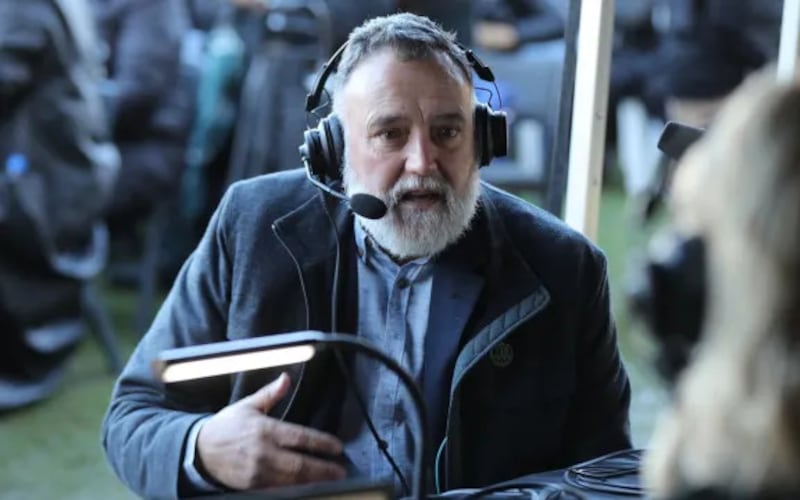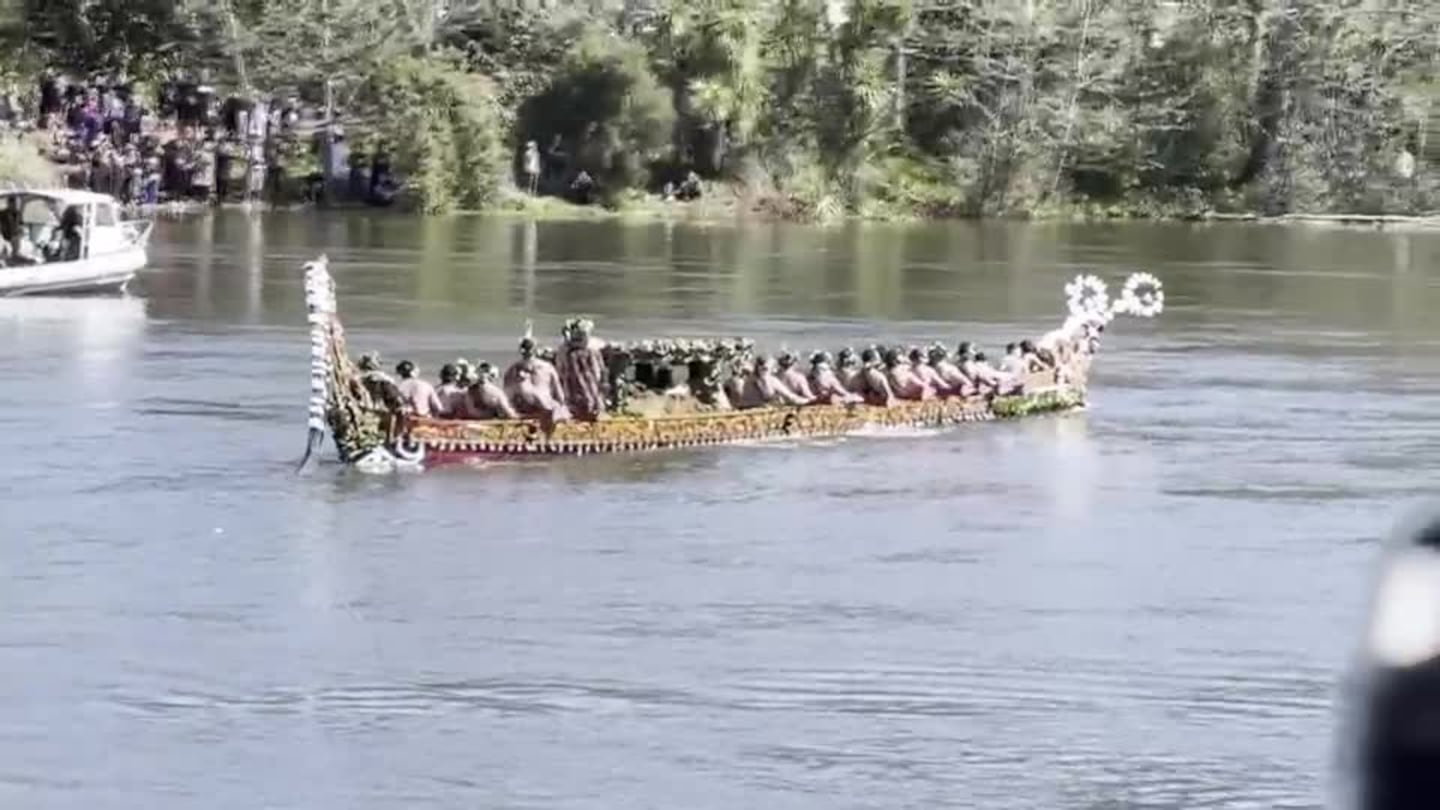This article was first published by RNZ.
“Anticipation is growing. The warriors are ready. They’re preparing themselves. The paddlers are already on their waka,” Scotty Morrison, alongside veteran journalist Tini Molyneux, told viewers from the banks of the Waikato River.
It was Thursday, and the body of Kiingi Tuheitia was being escorted to the barge to take him to his resting place on Taupiri maunga.
That prompted Morrison - the presenter of TVNZ’s Te Karere and Marae - to recall that council permission was required in 2006 for Te Arikinui Dame Te Atairangikaahu to make the same journey.
Times have changed.
“In 2008 after the Waikato River settlement ... a request was put in by Waikato Tainui that they had more control over the river. This time they could say: ‘We’re taking our King on the awa at this particular time,’” Morrison said.
“That’s mana motuhake for you,” Molyneux replied.
Times have changed a lot for the media since 2006 too.
Whakaata Māori now has two TV channels, which both carried live coverage of the ceremonies over five days.
The Kiingitanga’s own channel also broadcast live throughout on YouTube and Facebook as well.
Another broadcaster who joined that epic broadcast on Friday, Matai Smith, reminded viewers that the notion of media is not what it was in 2006 either.
“We know that we live in a world of TikTok and Instagram. [We know] the relevance of the Kiingitanga to Waikato Tainui, but also to us here in Aotearoa - and many of us could be seen as quite ignorant of the significance of this kaupapa,” Smith said.
After Kuini Nga wai hono i te po became the eighth Māori monarch - and the second youngest ever anointed - Mihingarangi Forbes also made the point about social media on RNZ’s Morning Report.
“I’ve been checking the socials because she is 27 years old, and the average age of Māori is also 27 years old. This is the way that this generation communicates,” Forbes said, noting that her own social feeds filled up with tributes to the new Kuini.
While the tangihanga itself was a sombre and highly ceremonial occasion, the live coverage also had moments of levity on the paepae - and between broadcasters and their guests.
All this played out at Tūrangawaewae marae less than a fortnight after dignitaries and the media gathered for the annual Koroneihana celebration of the coronation of Kiingi Tuheitia.
The historic moment in te ao Māori and New Zealand history was covered comprehensively over five days thanks to a collaboration between Whakaata Māori and the iwi radio network Te Whakaruruhau. It was probably the longest continuous multimedia coverage of any event in our media’s history.
So how was all this done?
One of those in the media pack at Tuurangawaewae throughout was former Whakaata Māori presenter Kawe Roes, who is now a digital media reporter for Waatea News.
The Auckland-based Waatea also provides news to Te Whakaruruhau o Ngā Reo Irirangi Māori - the national iwi radio network.
“Tainui and the Kiingitanga already have systems in place to make it easy for broadcasting. They’ve been doing live streams for nearly 15 years,” Roes told Mediawatch.

“In my years of broadcasting, I don’t think I’ve ever seen the amount of talent that was put into making sure Kiingi Tuheitia had the best broadcast for his tangihanga for the whole world to watch.
“Once Tuheitia had taken the throne, he literally became the king of social media. By doing that so early, Kiingitanga and Koroneihana events were able to transition from a special broadcast that might have been done in the TVNZ days to a livestream.
“The hardest part wasn’t getting anyone there. We had so many people to choose from including journalists like myself who are versed in te reo and English. You also had Māori journalists who were just versed in English and iwi radio networks were also part of that.”

Roes said it was one big collective effort.
“The kaupapa was that the broadcast was more important than the brands. Even though we’re in different organisations, we all know each other. We’re a very small family, and I think by having that rapport made the job easier.
“We shared all our knowledge. I was sharing knowledge of Kiingitanga and Tainui whakapapa with a New Zealand Herald reporter.”
Just last month, Waatea News cut ties with the New Zealand Herald after it published Hobson’s Pledge adverts opposing iwi applications for customary marine titles.
“We put that to the side. If I, as a Māori journalist, can’t help him, then what am I doing on my job, really?
“At the end of the day, we’re here to put out an amazing story. And for me, that’s what made it beautiful.”
Were they broadcasting in the service of Kiingitanga and iwi around the country? Or to be the eyes and ears of people who could not be there? To capture it all for history? Or all of the above?
“From our Māori broadcasting perspective, it was all about quality ... because we knew it was going to be historic. The journalists, they took all the knowledge around them, and they put out some amazing content.”
Back to the future
The Kiingitanga evolved to deal with the Crown over urgent matters such as land sales and alienation. Now there is a young queen who is of the digital generation at a time when Māori/Crown relations are again tense and controversial.
“So it’s going to be interesting to see how she shapes Kiingitanga into this modern age. She is the boss. She is now the queen of Māoridom and how she wants to roll with tikanga, how she wants to roll in a digital space is up to her,” Roes said.
“From what I can tell, a lot of the status quo will remain. The only thing I would suggest is be careful who you’re talking to, not because of what you’re going to say, but we don’t want to overuse the majesty, and people end up hōhā listening to her.
“The reality is - in my Tainui perspective - we look at them with a sense of tapu. That means you don’t naturally go up to them and start talking. But we might see her going to Waitangi for instance.
“With young people, that might be where she thrives a bit more, and she can connect more with rangatahi - and she’s an easy lady to talk to.”

Māori media have treated the Kuini’s accession in a reverential way. But when seeking the voice of Māoridom on political or controversial things, that will have to change.
“I think the King changed the media landscape when throwing out support for the Māori Party. We’ve got an example there on how we can critique and how we can ask questions.
“But you’ll only ever get to the monarch through spokespersons, and that’s why you have people like Rahi Papa and (Kīngitanga’s chief of staff and adviser) Ngira Simmonds, who bring those thoughts to the media. Tainui are across how to deal with media - an iwi who have been dealing with the Crown for 166 years.”
Article by Colin Peacock of RNZ.

